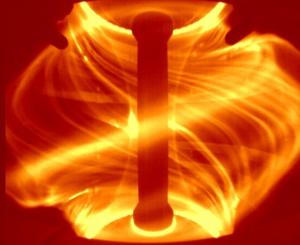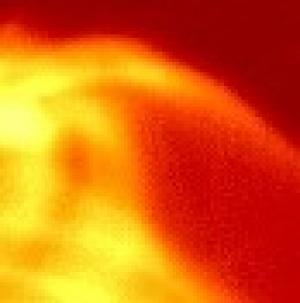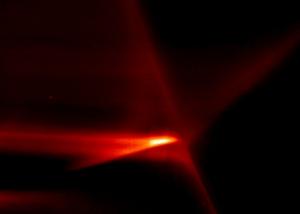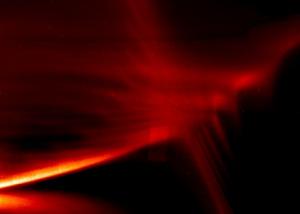Plasma fingers point to the taming of the ELM
One way of tackling the problem is ELM mitigation—controlling the instabilities at a manageable level to limit the amount of harm they can do. MAST is using a mitigation technique called resonant magnetic perturbation; applying small magnetic fields around the tokamak to punch holes in the plasma edge and release the pressure in a measured way. This technique has been successful in curbing ELMs on several tokamaks.
First predicted by US researcher Todd Evans in 2004, the lobes—known as homoclinic tangles—were seen for the first time during experiments at MAST in December 2011, thanks to the UK tokamak's excellent high-speed cameras. CCFE scientist Dr Andrew Kirk, who leads ELM studies on MAST, said: "This could be an important discovery for tackling the ELM problem, which is one of the biggest concerns for physicists at ITER. The aim for ITER is to remove ELMs completely, but it is useful to have back-up strategies which mitigate them instead. The lobes we have identified at MAST point towards a promising way of doing this."
"We already have codes that can determine the location of the fingers but we cannot predict their length due to uncertainties in how the plasma reacts to the applied perturbations. Our measurements will allow us to validate which models correctly take this plasma response into account," said Dr Kirk. "New codes will mean we can produce accurate predictions for ITER and help them tame the ELM."





